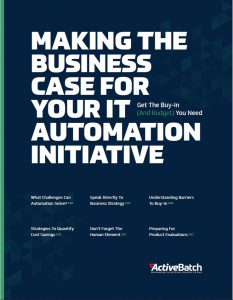What Is Meant By IT Business Alignment?
Today’s business strategies are being driven by digital technology. Digital tools provide customer services, manage day-to-day operations and much more. The COVID-19 crisis has increased the focus on digital transformation, with 70% of large businesses accelerating their digital business initiatives, according to research from Gartner.
Digital is key to long-term business success, and the path to digital transformation runs through IT.
Traditionally, the role of IT has been limited to maintaining systems and addressing tech issues (resetting passwords, provisioning laptops, etc.). IT teams have been service providers.
Today however IT teams are being asked to play key roles in managing day-to-day operations and bringing new products and services to market. Meanwhile, deploying and maintaining new tools that the entire organization depends on.
All too often, IT and business leaders have different priorities and different strategies. It turns out that siloed departments tend to stay siloed.
But organizations aren’t going to harness the business potential of digital transformation without a comprehensive strategy that pulls IT and business goals into alignment.
Why Is IT Business Alignment Important?
IT teams have their hands full. Aside from leading digital transformation initiatives they’re also busy keeping the lights on and fighting fires —all with limited time and resources.
Divergent strategies in IT and business almost always creates technical debt for the IT team. This can include redundant efforts, shadow IT and inefficient digital processes, ultimately creating more work for IT and slowing down the delivery of critical projects.
49% of CIOs report that IT and business teams working in silos is a main hurdle for transformation efforts, according to a survey report from Dynatrace.
Bringing IT into alignment with business means building a single strategy for both business and IT teams to work towards. This gives IT a well-defined roadmap of what technologies and capabilities will be needed.
Aligning IT and business helps streamline IT operations and development by focusing IT’s efforts on projects and deployments that move the organization forward.
How Do You Align IT With Business?
Business needs are continually changing to meet shifting market demands, consumer expectations and technological advancements. This has forced IT teams to rethink project management and best practices. Instead of treating goals and initiatives as projects with final deadlines and completion dates, IT teams are taking a product-based approach that favors continuous development.
This change requires IT teams to rethink their relationship with the business. Instead of being a service provider, IT teams are creators who provide services and products to both internal and external customers.
There are several ways IT teams can facilitate this evolution. To begin with, IT teams need the ability to partner with business teams to develop and iterate services and products. This requires new flexibilities in the way that IT teams operate, including the ability for IT personnel to self-organize in support of business goals and projects.
More importantly, IT leaders will need to build relationships with business leaders, including clear lines of communication and open conversations to make sure goals are understood and strategies are in alignment. Moving forward, IT leaders will need to play a larger role in managing day-to-day business operations and setting long-term business strategies. This will require IT leaders to have business acumen and a deep understanding of the business.
By building relationships between IT and business leaders, organizations can work to ensure that IT and business strategies are in alignment. IT leaders will need to offer consultations on what digital transformation can and should look like within the business, and what opportunities new technologies can offer to business leaders. By playing a more active role in business discussions, IT leaders can help businesses build strategies that are technically sound and cost-efficient.
Other steps that organizations can take in order to bring IT and business teams into alignment include IT roadmaps, KPIs and greater visibility. An IT roadmap should be produced that identifies what new technologies, capabilities and services IT will provide moving forward. This roadmap should be built in cooperation with business leaders to ensure that IT’s efforts are in full support of business goals (saving IT precious time and resources).
Meanwhile, IT teams should put more emphasis on KPIs and feedback from business partners. 49% of CIOs surveyed by Dynatrace reported that limited visibility and data into the use of their services and products were hampering development.
Business-aligned KPIs will help IT teams meet key markers while providing quantifiable proof of the value IT provides to the organization. This will include greater visibility into IT systems and how time is spent within IT, while gathering feedback from partners and stakeholders will help IT optimize the services and products it provides.
What Are The Benefits Of IT Business Alignment?
Siloed teams make it more difficult for IT to provide useful services and products, while wasting time and creating duplicative efforts. 40% of CIOs have found that limited collaboration between IT and business teams makes it more difficult for IT to respond quickly to changes in business needs.
Other impacts of siloed teams identified by IT leaders in the Dynatrace report include:
- 40% more inefficiency due to time wasted determining responsibilities
- 40% more difficulty determining the impact of issues, causing more impact to the business
- 39% more difficult to determine if IT is providing appropriate service levels
These issues ultimately increase the difficulty in understanding what business partners and external customers need, which makes it harder to maximize the business value of IT. On top of this, when IT’s efforts aren’t aligned with business goals, IT teams end up wasting time and resources, causing lost revenues and higher operating costs.
Bringing IT and business into alignment helps organizations to overcome these difficulties, ensuring that IT efforts are optimized to provide the most business value while enabling the organization to more quickly address new challenges.
What The Future Holds For IT-Business Relationships
As organizations become more reliant on digital tools, IT is becoming more central to the organization’s long term goals. As a result IT leaders are taking on more responsibilities tied to business operations, customer services and product development.
Gartner expects that, by 2025, one-in-ten IT leaders will be the defacto leader of customer experience for the organization, while 25% of CIOs will assume more COO responsibilities in leading digital business operations.
These trends are likely to continue through the end of the decade as new technologies such as artificial intelligence, the internet of things and blockchain, among others, revolutionize business models. CIOs and tech leaders will be business leaders, responsible for building business strategies, overseeing operations and leading the development of new products and services.

